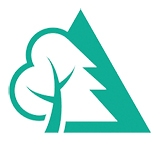Introduction
From what we know about other coronaviruses, spread of COVID-19 is most likely to happen when there is close contact (within 2 metres or less) with an infected person. It is likely that the risk increases the longer someone has close contact with an infected person.
Respiratory secretions (droplets) containing the virus are likely to be the most successful means of transmission – these are produced when an infected person coughs or sneezes.
There are 2 routes that can lead to people becoming infected:
- Secretions can be directly transferred into the mouths or noses of people who are nearby (within 2m) or possibly could be inhaled into the lungs.
- It is possible that someone may become infected by touching a person, a surface or object that has been contaminated with respiratory secretions and then touching their own mouth, nose, or eyes (such as shaking hands or touching door knobs then touching own face).
People Displaying Symptoms
Anyone who displays the main symptoms of Covid-19, a high temperature and/or a new persistent cough, must not come to site: They must follow the guidance on self-isolation:
Do not leave your home if you have symptoms of Covid-19 or live with someone who does.
If you are self-isolating, you must:
- not leave your home for any reason – if you need food or medicine, order them by phone or online, or ask someone else to drop them off at your home.
- not have visitors, such as friends and family, in your home.
You can use your garden, if you have one. Any exercise should be taken at home.
Procedure if Someone Falls Ill
If a worker develops a high temperature or a persistent cough while at work, they must:
- Return home immediately.
- Avoid touching anything.
- Cough or sneeze into a tissue and put it in a bin, or if they do not have tissues, cough and sneeze into the crook of their elbow.
- Follow the guidance on self-isolation and not return to work until their period of self-isolation has been completed.
If a member of staff has helped someone who was taken unwell with a new, continuous cough or a high temperature, they do not need to go home unless they develop symptoms themselves. They should wash their hands thoroughly with soap and water for 20 seconds after any contact with someone who is unwell with symptoms consistent with coronavirus infection.
First Aid Treatments
This guidance is for treating people not currently displaying symptoms of Covid-19. If a person is displaying symptoms they should not be on site.
Preserving life is the overring priority in any given first aid situation. This will include treating life- threatening injuries. If someone requires CPR or has a life-threatening injury, then the treatment overrides social distancing measures.
Before approaching any casualty stop and assess the situation, giving due regard for your own safety, as per normal first aid practice.
In the first instance assess a person’s injuries while maintaining 2 metres distance by observing the injury and talking to the casualty. If they have minor wounds, then instruct them on how to treat themselves.
If the casualty doesn’t respond or injury requires treatment, then wear disposable gloves and eye protection.
Recognise cardiac arrest by looking for the absence of signs of life and the absence of normal breathing. Do not listen or feel for breathing by placing your ear and cheek close to the patient’s mouth. If you are in any doubt about confirming cardiac arrest, the default position is to start chest compressions until help arrives.
Place a cloth/towel over the victim’s mouth and nose and attempt compression only CPR and early defibrillation until the ambulance (or advanced care team) arrives. Put hands together in the middle of the chest and push hard and fast.
If the decision is made to perform mouth-to-mouth ventilation, use the resuscitation face shield in your first aid kit.
Use and dispose of all PPE in a sealable disposable bag. Wash your hands thoroughly before and after putting on and taking off PPE. Double bag all waste and leave for 72 hours before disposal.
If there has been a blood or body-fluid spill, keep people away from the area. Use a spill kit or paper towels to cover up the area. Seek further advice from the emergency services when they arrive. Immediately inform the emergency services if the casualty is displaying COVID 19 symptoms.
If you become ill with COVID 19 symptoms after performing first aid, stay home and self-isolate as per standard Government advice.



